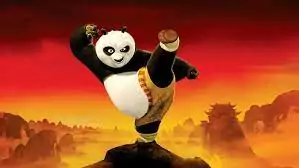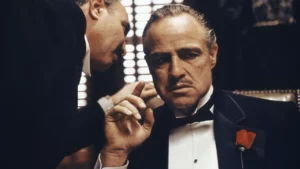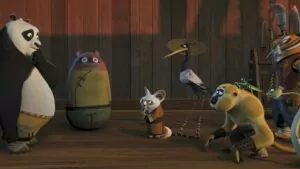Introduction:
The Kung Fu Panda franchise, a delightful blend of humor, heart, and martial arts mastery, has captivated audiences of all ages since its inception. DreamWorks Animation struck gold with the release of the first film in 2008, introducing us to the lovable, roly-poly panda, Po, and his journey from a noodle shop worker to the formidable Dragon Warrior. As the franchise evolved, it not only maintained its signature comedic style but also delved into deeper themes, creating an experience that resonates on multiple levels.

Unique Blend of Comedy and Action:
One of the franchise’s standout features is its unparalleled ability to seamlessly intertwine comedy and action. From the slapstick humor that appeals to younger viewers to the witty and clever dialogue that keeps adults engaged, Kung Fu Panda strikes a perfect balance. The humor isn’t just an accessory; it’s a vital component that enhances the overall storytelling experience. The comedic elements are not merely for laughs; they serve as a gateway to connect audiences emotionally with the characters. Moments of levity are strategically placed to relieve tension, making the intense action sequences even more impactful. It’s this skillful blend that sets the franchise apart, making it enjoyable for audiences of all demographics.
Memorable Characters:
Central to the Kung Fu Panda franchise’s success are its memorable and endearing characters, each with a unique personality and journey. At the heart of it all is Po, the unlikely hero who evolves from a bumbling, food-loving panda to the Dragon Warrior. His relatable qualities make him an instant favorite, and audiences find themselves cheering for his triumphs and empathizing with his struggles. The franchise, however, is not a one-panda show. Supporting characters like Tigress, the stern yet compassionate warrior, and Shifu, the wise and skilled instructor, contribute depth and nuance to the narrative. The ensemble cast, including the Furious Five, showcases diverse personalities and backgrounds, creating a tapestry of characters that resonate with a wide audience.
The character development within the franchise is nothing short of remarkable. Throughout the trilogy, Po’s growth is not just physical but emotional and spiritual. His journey from self-doubt to self-discovery is woven intricately with moments of humor, camaraderie, and self-reflection. The supporting characters also undergo significant arcs, providing a rich and dynamic backdrop to Po’s narrative. The relationships forged among the characters, be it the camaraderie between Po and the Furious Five or the father-son dynamic with Mr. Ping, the noodle shop owner, add layers of emotional depth. It’s this character-driven storytelling that elevates Kung Fu Panda beyond a mere animated adventure, forging a connection between the audience and the characters that lingers long after the credits roll.
Artistic Animation and Visual Appeal:
From the lush landscapes of the Valley of Peace to the intricate detailing in the characters’ fur and expressions, the Kung Fu Panda franchise exemplifies the pinnacle of artistic animation. DreamWorks Animation, over the course of the three movies, consistently raised the bar, pushing the boundaries of what animated films could achieve visually. The evolution of animation quality is evident in every frame, with Kung Fu Panda 2 and 3 showcasing advancements in technology that enhance the visual spectacle. The attention to detail in the fight choreography, the vibrant color palettes, and the fluidity of character movements contribute to an immersive viewing experience.
Themes and Life Lessons:
Beyond the laughter and action, the Kung Fu Panda franchise weaves profound themes and life lessons. At its core, the narrative explores the timeless journey of self-discovery, transcending age and cultural boundaries. Po’s evolution from a seemingly ordinary panda to the Dragon Warrior mirrors the universal quest for identity and purpose. The franchise skillfully tackles themes of self-belief, resilience, and the transformative power of embracing one’s true potential. Viewers, young and old alike, find inspiration in Po’s journey, resonating with the idea that greatness can emerge from the most unexpected places.
The thematic depth of the Kung Fu Panda franchise also extends to the exploration of friendship and camaraderie. The bonds forged between Po and the Furious Five exemplify the strength that comes from diversity and unity. Each member brings a unique skill set and perspective, teaching audiences the value of collaboration and mutual respect. The franchise subtly communicates the importance of surrounding oneself with a supportive community, reinforcing the idea that true strength lies not just in physical prowess but in emotional connections.
Kung Fu Panda (2008) – A Journey of Self-Discovery:
The inaugural installment of the Kung Fu Panda trilogy lays the foundation for the franchise’s success by introducing us to the endearing protagonist, Po. A seemingly ordinary panda working in his father’s noodle shop, Po’s life takes an unexpected turn when he is chosen as the Dragon Warrior, destined to protect the Valley of Peace. The film navigates Po’s initial struggles and self-doubt as he grapples with his newfound identity. The juxtaposition of his affable personality with the discipline required in kung fu training creates moments of both humor and poignancy.
As Po embarks on his journey under the tutelage of Master Shifu and alongside the Furious Five, the film balances character development with exhilarating action sequences. Po’s unorthodox approach to martial arts, incorporating his love for food and innate creativity, challenges the conventional notions of what it means to be a dragon warrior. The narrative unfolds as a quest of self-discovery, culminating in a showdown with the formidable Tai Lung. Po’s victory not only solidifies his place as the Dragon Warrior but also sets the stage for the deeper explorations of identity and purpose in the subsequent films.
Kung Fu Panda 2 (2011) – Unraveling Po’s Past:
The second installment of the Kung Fu Panda series takes the narrative to new heights by delving into Po’s mysterious past. Po, now a confident Dragon Warrior, faces a formidable new adversary, Lord Shen, a peacock with a dark and ambitious agenda. As Po confronts this powerful foe, he grapples with visions that unlock fragments of his origin story. This shift in focus elevates the sequel, transforming it into a tale of self-discovery not only for Po but also for the audience.
The film weaves the threads of Po’s journey with the broader conflict involving Lord Shen’s deadly invention. The stakes are higher, and the emotional resonance deepens as Po seeks answers about his lineage and struggles with his identity. The introduction of characters like Soothsayer adds a layer of wisdom and nuance, guiding Po on his introspective quest. The synergy between the personal and the epic creates an experience that transcends the typical animated sequel, leaving audiences emotionally invested in Po’s pursuit of truth.
Kung Fu Panda 3 (2016) – Embracing Change:
In the concluding chapter of the trilogy, Kung Fu Panda 3 embraces the theme of change and familial bonds. Po’s world expands as he discovers the existence of a hidden panda village and reunites with his long-lost father. This revelation introduces Po to a community that shares his love for food and fun, creating moments of warmth and humor. However, the film doesn’t merely rest on the laurels of familial reunion; it explores Po’s internal struggle to reconcile his identity as both a panda and the Dragon Warrior.
As Po faces a new adversary, Kai, who threatens both the mortal and spiritual realms, the narrative weaves action with poignant moments. Po’s journey to master the art of chi, guided by his father and fellow pandas, becomes a metaphor for embracing change and evolving beyond one’s perceived limitations. The film celebrates the interconnectedness of family, both biological and chosen, and emphasizes the importance of adaptability in the face of life’s inevitable changes. Kung Fu Panda 3 serves as a satisfying conclusion to the trilogy, reinforcing the franchise’s commitment to storytelling that resonates on emotional and philosophical levels.
Impact on Pop Culture:
The influence of the Kung Fu Panda franchise extends far beyond the confines of the movie theater. It has left an indelible mark on pop culture, permeating various facets of entertainment and merchandise. The lovable characters have become iconic, gracing merchandise shelves with toys, clothing, and accessories. Po’s image is not just confined to the screen; it has become a symbol of resilience and determination, resonating with audiences of all ages.
Anticipating the Fourth Installment: A New Chapter for Kung Fu Panda Fans
The excitement is palpable as the Kung Fu Panda franchise, a beloved and iconic animated series, prepares to unveil its fourth installment in the coming months. For fans who have journeyed alongside Po and the Furious Five, this announcement heralds a new chapter filled with anticipation, adventure, and the promise of more kung fu magic.
Conclusion:
The Kung Fu Panda franchise stands as a testament to the power of animated storytelling to transcend age, cultural boundaries, and expectations. From its humble beginnings in 2008 to the triumphant conclusion in 2016, the trilogy has not only entertained but also inspired and enlightened audiences around the world. The unique blend of comedy and action, coupled with memorable characters and thematic depth, has elevated Kung Fu Panda to a status far beyond a typical animated series.



